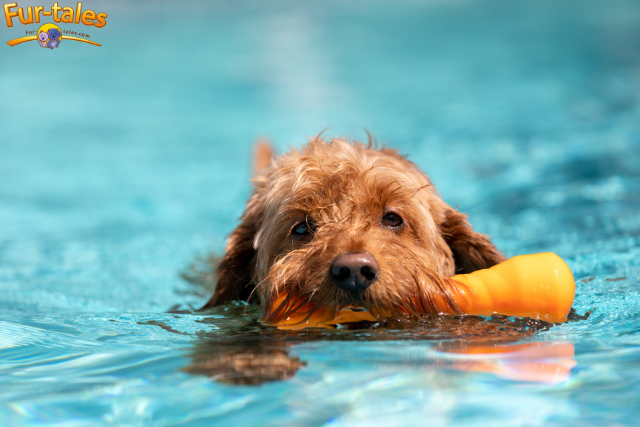
Making a Splash: How to Safely Get Your Dog Used to Water
Swimming is a fantastic activity for dogs — it builds muscle, improves heart health, and helps burn off extra energy. But while some pups leap joyfully into the water, others freeze at the sight of a pool or beach. Whether you have a new puppy or an older dog that’s hesitant about water, helping your furry friend feel safe and confident around it takes time, patience, and the right approach.
In this guide, we’ll walk you through step-by-step tips on how to safely get your dog used to water — whether it’s for play, baths, or swimming.
Why Some Dogs Fear Water
Not all dogs are natural swimmers. Some breeds, like Labradors and Golden Retrievers, tend to love the water. Others — like Bulldogs or Dachshunds — might not be built for swimming and may naturally resist it.
Reasons your dog might fear water:
- Lack of early exposure
- A bad past experience (e.g., falling in or being forced to swim)
- Breed characteristics (flat-faced breeds may struggle to breathe while swimming)
- Personality and anxiety levels
The key is to introduce water gradually and positively, never forcing the experience.
Step-by-Step: Introducing Your Dog to Water Safely
1. Start Small — Use a Kiddie Pool or Shallow Tub
Begin with a low-stress environment. Fill a kiddie pool, tub, or basin with just an inch or two of lukewarm water. Let your dog explore at their own pace, without pressure.
- Sit beside them and reward any curiosity.
- Use toys or treats in the water to encourage stepping in.
- Never splash them unexpectedly — it can cause fear.
???? Pro Tip: Some dogs respond well to toys that float — squeaky balls, floating sticks, or soft discs.
2. Make Bath Time a Positive Experience
If your goal is to help with bathing, start by making bath time enjoyable:
- Use a non-slip mat to prevent slipping.
- Reward calm behavior with treats and praise.
- Use gentle water pressure and lukewarm water.
- Gradually increase water exposure — starting from feet to body.
Avoid harsh shampoos or cold water, which can associate bath time with discomfort.
3. Introduce Swimming in Calm, Shallow Water
When your dog seems ready to explore bigger water:
- Choose a calm lake, pond, or shallow beach with no waves or strong currents.
- Keep them leashed initially, using a long line for control.
- Walk into the water with them, encouraging at their comfort level.
- Let them get wet paws before trying anything deeper.
???? Important: Never toss or push a dog into water. Let them lead the pace.
4. Use a Dog Life Jacket
Even if your dog is a good swimmer, a canine life jacket provides safety and confidence. Choose one with:
- A snug but comfortable fit
- A sturdy handle on top
- Bright colors for visibility
Dogs with low body fat, short legs, or flat faces especially benefit from a life jacket.
5. Use Positive Reinforcement
Every splash, step, or paddle should be met with encouragement:
- Use treats, favorite toys, or verbal praise
- Practice sessions in short bursts — 5 to 10 minutes
- Never scold or rush them — setbacks can make future sessions harder
With consistent positivity, your dog will begin associating water with fun and rewards.
6. Swim With Your Dog (If Safe)
If you’re at a safe, dog-friendly location and confident in your dog’s comfort:
- Wade into the water with them
- Let them swim toward you
- Offer praise and support if they seem unsure
Dogs often feel more secure when their human is in the water too.
What Not to Do
Avoid these common mistakes that can lead to water anxiety:
- Forcing your dog into the water
- Skipping gradual exposure
- Using high water pressure during baths
- Leaving your dog unsupervised near deep water
- Allowing a bad experience (like being dunked) to go unaddressed
Special Notes for Non-Swimmer Breeds
Not all dogs are built to swim. Breeds with large chests, short legs, or flat faces may tire easily or struggle to breathe.
Examples include:
- Bulldogs
- Pugs
- Basset Hounds
- Dachshunds
These dogs can still enjoy shallow water play or poolside lounging — just with safety precautions and extra supervision.
Water Activities Your Dog Might Enjoy
Not every pup will want to swim laps. Here are other fun ways to get your dog used to water:
- Sprinkler play in the yard
- Shallow stream walks
- Tug-of-war in a splash pool
- Water fetch using floating toys
- Ice cubes or frozen treats in water bowls for hot days
Signs Your Dog Is Comfortable in Water
Watch for these behaviors:
- Voluntarily stepping into water
- Wagging tail or relaxed body
- Paddle-like motions while in the water
- Returning to the water after stepping out
When to Seek Help
If your dog shows extreme anxiety, fear, or aggression around water, consider:
- Consulting a professional trainer or behaviorist
- Working with a vet to rule out physical discomfort
- Slowing the introduction process even further
Each dog is unique — there’s no shame in taking extra time or choosing shallow water play over swimming.
Image Designed Using Canva
